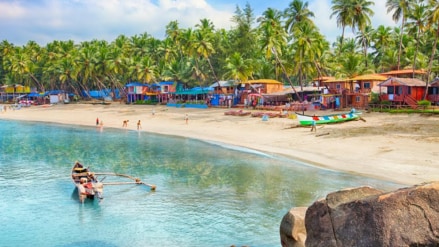Goa has long been India’s go-to destination for sun, sand, and sea, attracting millions of tourists every year. However, in recent months, concerns have emerged over whether Goa’s tourism industry is in decline. Despite social media chatter and images of empty Titos Lane and Baga beaches, the government has maintained, that there is no exodus. Even as overall footfall remains high, a drop in foreign visitors and rising costs have fueled a debate about the future of the brand Goa. Here’s a reality check on whether tourists are ditching Goa for other destinations or have they found new party spots.
Is Goa’s tourism on decline?
Tourism data suggests that Goa remains a popular destination. Kedar Naik, Director of Tourism, Government of Goa, told financialexpress.com that the state recorded a 21% increase in total tourist arrivals in 2024, bringing the number to over 10.4 million visitors. This includes nearly 9.94 million domestic tourists and 467,911 international tourists, a rise from 8.63 million visitors in 2023. However, despite this overall growth, the number of foreign visitors remains significantly below pre-pandemic levels from 2019.
Shivam Verma, VP Operations at Royal Orchid Hotels, believes Goa’s tourism is evolving rather than declining. He notes that while international footfall has softened, domestic tourism remains robust, especially in the premium and boutique segments. “We have seen a 10-15% increase in bookings from high-spending Indian travellers, particularly for experiential and short, high-value vacations,” Verma added.
Why is foreign tourism falling?
According to experts, Goa has seen a decline in international visitors due to a mix of geopolitical, economic, and environmental factors. The ongoing Russia-Ukraine war and instability in the Middle East have significantly impacted travel, both of which have traditionally contributed to Goa’s tourism industry.
Rising costs have also made Goa less competitive. Increasing hotel tariffs, inflated transportation charges, and a higher cost of living have driven tourists to destinations like Thailand, Vietnam, and Indonesia, which offer better infrastructure at lower prices. “ Factors such as high taxi fares and concerns about beach cleanliness have been cited as deterrents,” Sangram Ghorpade, CEO, Joy n Crew, commented. The lack of app-based taxi services like Ola and Uber has added inconvenience for tourists who do not know the language. Many visitors struggle with unregulated taxi fares, making it harder to move around affordably.
Environmental concerns further affect Goa’s appeal. Growing beach pollution, overcrowding, and unchecked commercial activities have diminished its charm. “ Environmental concerns are playing a role—beach pollution has increased by more than 40%, affecting the overall appeal of the destination,” Atul Upadhyay, EVP of Pride Hotels Group, noted.
A few days ago, BJP MLA Michael Lobo urged Goa’s tourism department to cancel the licences of shack owners subletting to “outsiders,” arguing that Goan beach shacks should serve local cuisine, not idli-sambar. He blamed the decline in tourism on a lack of authenticity, questioning, “What kind of tourism are we promoting?”
Domestic tourism booming, but challenges persist
While foreign visitor numbers have declined, domestic tourism is thriving. Rajesh Magow, Co-founder & Group CEO of MakeMyTrip, reports a 12% increase in searches for Goa on the platform, with a 14% rise in room night sales across hotels, homestays, and villas. This shift reflects a growing preference for premium and luxury accommodations, with bookings for properties priced above ₹7,000 per night rising by 41% year-on-year.
However, the tourism boom has brought its own challenges. The rapid increase in new hotel openings and homestay options has heightened competition, affecting traditional businesses. Verma points out that while footfall remains high, “standalone properties and smaller hotels are feeling the impact due to an oversupply of rooms. Nearly 1,500 new hotel keys have been added in the last two years, alongside a surge in homestays and villa rentals.”
Government’s perspective and policy push
Goa’s Chief Minister Pramod Sawant has dismissed claims of a tourism decline, attributing concerns to misleading narratives spread by social media influencers. Speaking at the ABP Network’s Ideas of India Summit 2025, he stated, “Goa remains a safe and clean destination, attracting visitors who come to enjoy the sun, sand, and sea.” He also cited government efforts to decongest popular tourist spots as a reason why some beaches appeared emptier during peak season.
While foreign tourist arrivals have undeniably dipped, the broader picture suggests that Goa is far from losing its tourism crown. It risks losing its competitive edge internationally unless issues related to transportation, affordability, and sustainability are addressed.
Ghorpade sums it up by saying “Goa’s tourism is not in decline—domestic tourism is at an all-time high. However, international arrivals remain below pre-COVID levels, impacted by service and infrastructure-related challenges. The data indicates that while Goa continues to thrive as a preferred destination, further efforts may be needed to attract global visitors back to its shores.”
